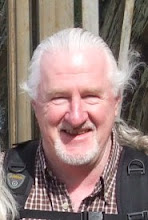I'm currently reading
Tolkien's Ring by David Day & illustrated by Alan Lee who also masterly illustrated a version of the Lord of the Rings.
The basis synopsis is that Tolkien borrows from ancient myths regarding the Ring. The author postulates that Tolkien has used naming, ideas and concepts regarding the power of the Ring in ancient myths including Norse, Celtic,
Judea Christian, Carolingian as well as other cultural Ring myths. He spends significant time comparing
Odin's tales of Norse , The Vosunga Sagas, the Germain
Nibling and Arthurian Myth to make his case.
In most cases Tolkien, he asserts, has changed the basic concept of an all powerful ring whose function is to accord special extra worldly powers to the wearer. There is little if any moral
responsibility associated with the use of the power. Tolkien however was focused on the how power
corrupts absolutely in that even
Gandalf could not resist the power of the one evil ring and had to resist the tempatation to wear the ring. Tolkiens epic battle of good and evil is focused on destroying what was made to currupt and focus the power of evil, the one Ring. Only if that source of evil is destroyed , where it was created, and then good can triumph over evil.
There is a very interesting comparison to Odin and the one ring '
Draupnir' which dripped new gold rings (8) every nine days. Also interesting is the tie in between Odin's sword in the tree v/s Arthur's sword in the stone.
The author also has an interesting look at alchemy and the ring, the use of fire to forge the ring , and how the use of fire in LOTR played out. He equates the one Ring to 'Ouroborus', the serpent ring of the alchemist tradition, born of fire. The battle of 'good fire' Gandalf and 'bad fire' Balrog resulted in the destruction of both but Gandalf was "raised again" as Gandalf the White.
The fact is Tolkien has constructed his own fantasy world. He created an epic that has stood the test of time and has become one of the greatest fantasy stories of all time. It seems to me that we all borrow either consciously or unconsciously from the past. If Tolkien indeed did borrow from such myths that is neither here nor there. In the art world I see syncronicity happening all the time. The "ether" is all around and we all can draw from it. Sometimes we may have a few borrow the same thought or idea at the same time.
It certainly is an interesting read. there is a good amount of discussion of the "otherworlds' and this earth world. The author presents his arguments but in no way moralises over Tolkien's use of elements from ancient myth. I would have appreciated a list of chapter resources at the end of book for research purposes. Certainly food for thought and quite well illustrated by Alan Lee.
For me the striking reality is that so much of what we are today is rooted on the ancients. In many cases our religions have melded and incorporated mystical elements of shamanisim and ancient myth. I think we can learn so much from the past, that is if we ever learn. We certainly can learn from the ancients by listenening and absorbing from the "ether". I call it 'listening in" or being intuitive.
 Medici Shield, Sienna- Polaroid Photo Transfer by Stephen Murphy
Medici Shield, Sienna- Polaroid Photo Transfer by Stephen Murphy


